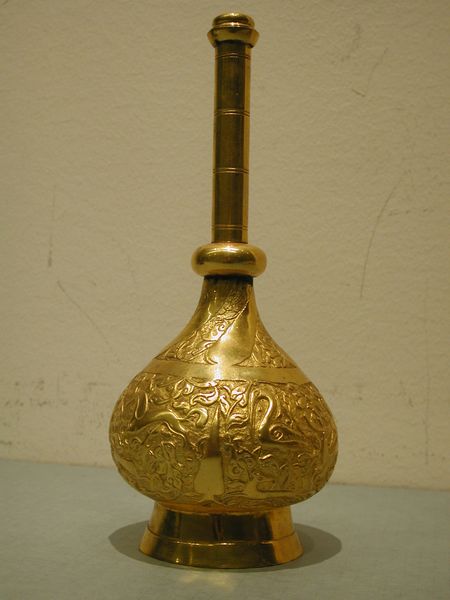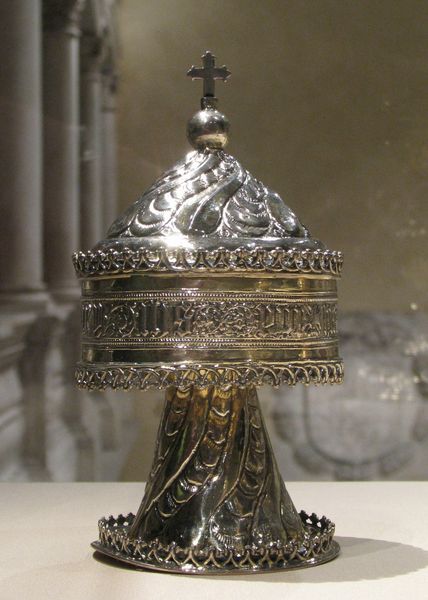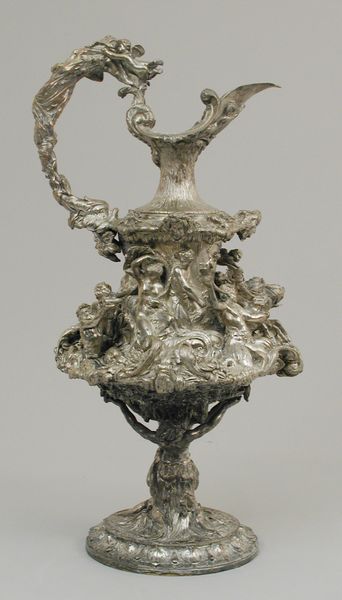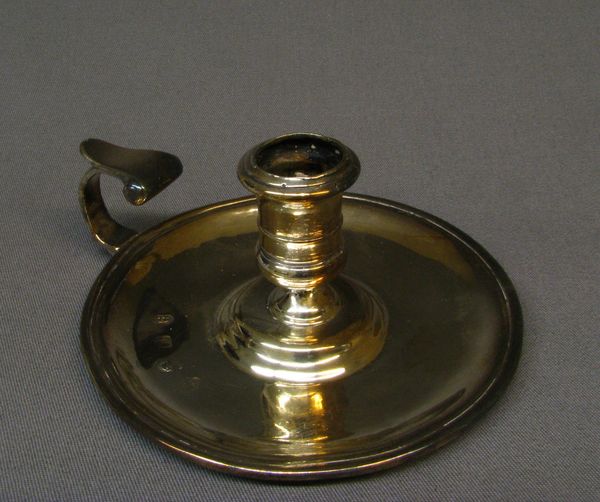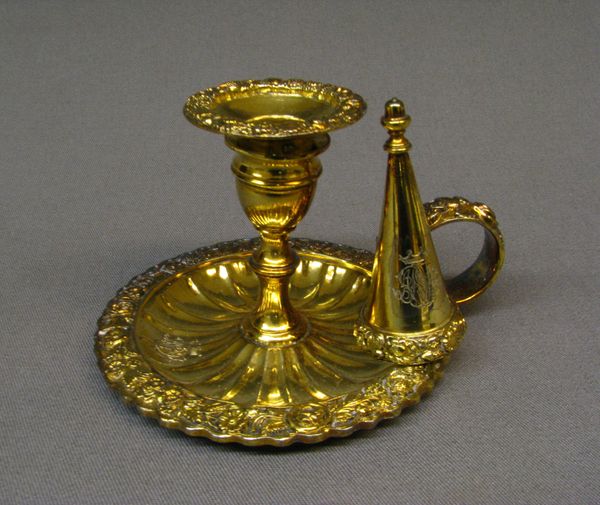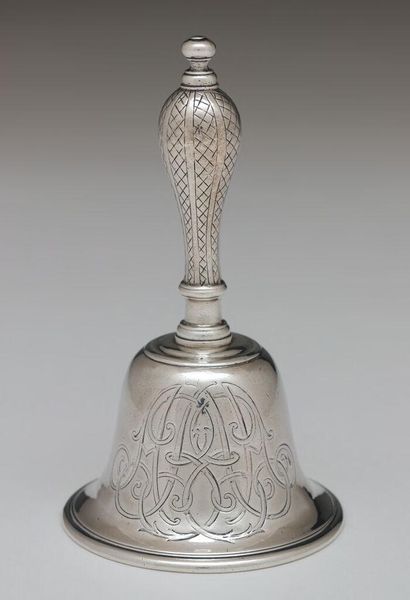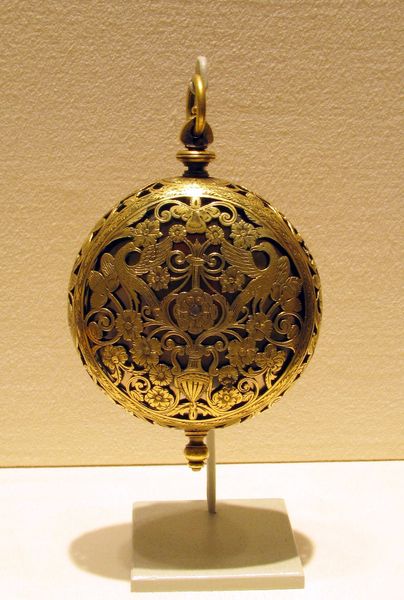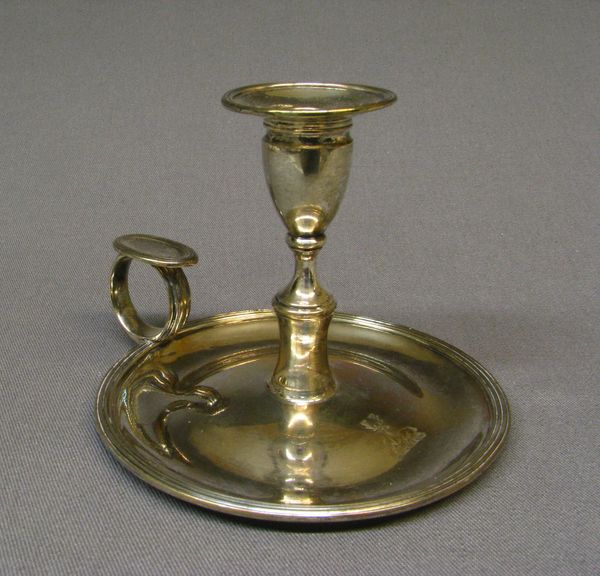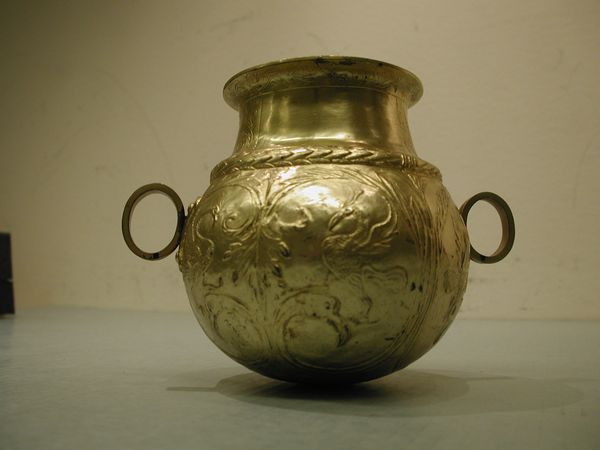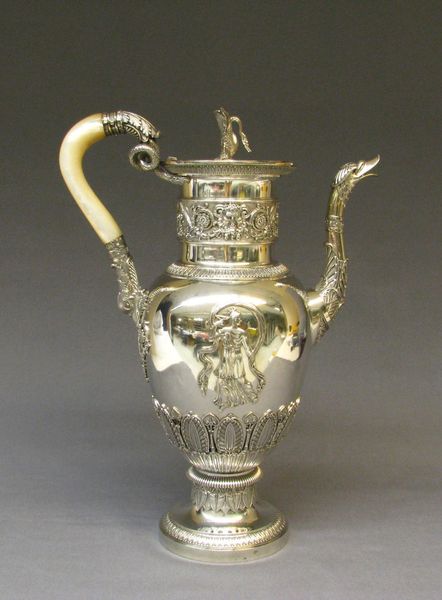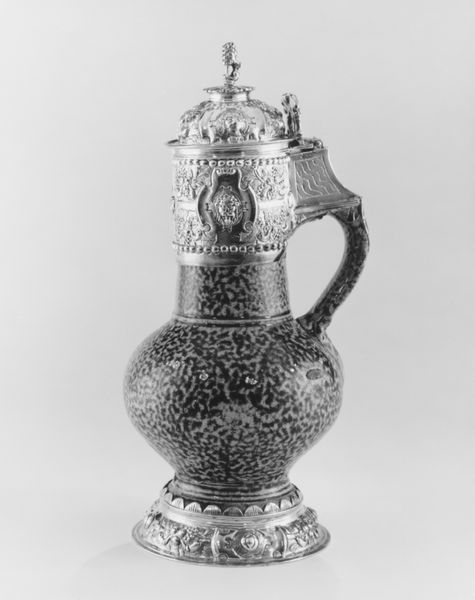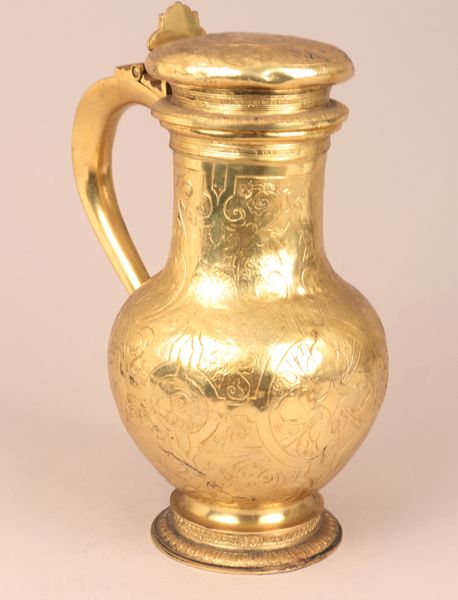
silver, metal, sculpture
#
byzantine-art
#
silver
#
metal
#
sculpture
#
geometric
#
sculpture
#
decorative-art
Dimensions: Height: 15 in. (38.1 cm)
Copyright: Public Domain
Editor: This is a silver Ewer, created sometime between 1845 and 1855 by François-Desiré Froment-Meurice. Its surface is covered in a mesmerizing geometric pattern. What historical currents do you see reflected in this piece? Curator: I see a deliberate reach back to Byzantine art, a period often romanticized for its perceived spiritual purity and imperial grandeur. Given its creation in the mid-19th century, what social and political forces might be at play in reviving such a style? Editor: Perhaps a desire to connect with a powerful historical legacy? A yearning for stability in a time of upheaval? Curator: Precisely! The Ewer emerges during a period of significant social and political change in France, marked by revolution and the rise of industrialization. Think about it - who would commission such an elaborate, handcrafted object? Editor: Probably someone from the upper class wanting to express wealth. Curator: Indeed. But it’s not just about wealth; it’s about the performance of status through a visual language rooted in idealized historical narratives. What does that say about anxieties around social mobility and the shifting distribution of power during this period? Editor: So, the ewer is more than just a decorative object. It embodies a complex dialogue between historical appropriation and contemporary social anxieties. Curator: Absolutely! By examining the convergence of style, material, and social context, we can understand the Ewer as a potent symbol of 19th-century French society, not just a pretty object. Editor: This gives me a lot to think about, recognizing historical context adds layers of meaning I wouldn't have considered before.
Comments
No comments
Be the first to comment and join the conversation on the ultimate creative platform.
